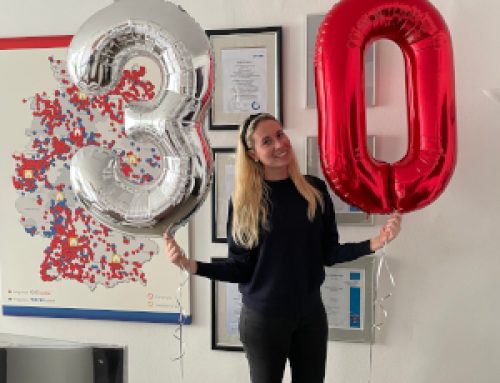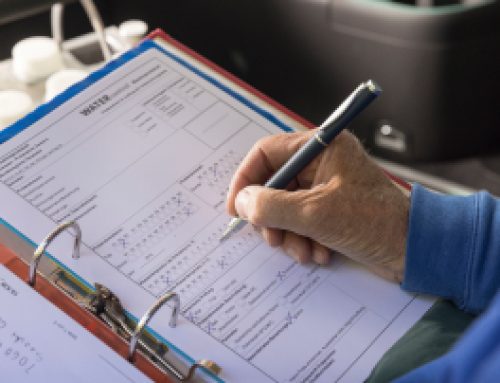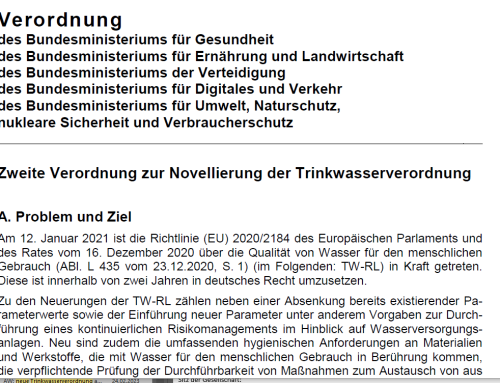In the proceedings of the dominating covid19 pandemic industrial, commercial and private buildings had to be shutdown to avoid the spread of the corona virus The German Robert-Koch-Institute (RKI) warned not to neglect the health hazards coming from drinking water installations in terms of legionella growth if the facilities are out of operation for a longer period of time. We took a look at our own set of drinking water data all gathered in corona-times – with surprising results.
 In its epidemiological bulletin of October 29th, 2020 the RKI published case figures of the Legionnaire’s disease since the beginning of the Corona Pandemic until End of Juli 2020. https://edoc.rki.de/bitstream/handle/176904/7025/EB-44-Legion%C3%A4rskrankheit.pdf?sequence=1&isAllowed=y).
In its epidemiological bulletin of October 29th, 2020 the RKI published case figures of the Legionnaire’s disease since the beginning of the Corona Pandemic until End of Juli 2020. https://edoc.rki.de/bitstream/handle/176904/7025/EB-44-Legion%C3%A4rskrankheit.pdf?sequence=1&isAllowed=y).
The researches tried to find out if the corona-related lockdown measures including limited accessibility or shutdown of public and commercial buildings has had an impact on the numbers of Legionnaire’s disease regularly reported. On the other hand, after the end of lockdowns new sources of exposition, i. e. water sources with relevant legionella concentration due to changed consumer’s behaviour, could occur.
Pandemic-related measures and behavioural changes could have an impact on the number and occurrence of Legionnaire’s disease acquired in the private/occupational area as well as travel-associated. For instance, non-usage of swimming of pools for more than 6 weeks could have caused a significant rise in legionella numbers, especially when the installation has not been flushed and maintained regularly. Back in operation, these plants could promote the spread od Legionella causing more cases of Legionnaire’s disease in the private environment.
The timeline of cases of Legionnaire’s disease demonstrates a clear increase not onlay from January to March, but also from May to July. The slight increase in cases reported beginning in May could be related to the re-opening of facilities with drinking water installations such as swimming pools and other leisure institutions. Another explanation is that due to diminished trips and journeys the number of people exposed to Legionella at their homes was unusually high. All in all, the increase was plausible and confirms the trend of the past ten years.
 In respond to the RKI-findings we thumbed through our own data set asking ourselves if the temporary lockdown measures lead to higher Legionella occurrence in the commercial facilities we drew water samples from.
In respond to the RKI-findings we thumbed through our own data set asking ourselves if the temporary lockdown measures lead to higher Legionella occurrence in the commercial facilities we drew water samples from.
We were fortunate to have access to two data bases with a high amount of drinking water information concerning legionella samples from potable water hot (pwh)
The frist set of drinking water data consists of 13,410 samples we contracted in the period from June to October 2020. We could actually take 12,101 samples we were commissioned to. The success rate of 90.24% is close to the average annual rates from prae-corona times. In that time we collected 13,410 samples, 8,492 from orienting examinations (63.33%) and 4.882 from follow-up examinations (36.41%). A special examination with 36 samples could be neglected.
From 13,1410 samples planned actually 12,101 samples could be drawn and examinated for legionella. his corresponds to a rate of 90.24%, which is roughly at the level of pre-COVID times.
Out of the 9.76% of samples not taken, 460 can be attributed to technical defects, short-term remodeling measures, or customer “cancellations”. Access was denied by the tenant, property owner, or authorized user 505 times. As a reminder, just before our own business closure at the end of March, we had approximately 125 cases of denied access per calendar week. This was due to the apparent high level of uncertainty among the population at that time. Distributed over 20 calendar weeks, we can expect approximately 25 cases of denied access. This only slightly exceeds the usual rate, with 505 cases representing 3.77% of all samples requested. This is an increase of 0.98% compared to the overall rate for the entire year 2019, which was 2.79%. A full percentage point is easily manageable for us and is certainly attributable to the overall (still) tense Covid-19 situation.
 During the observation period, 881 samples exceeded the technical measure value (TMV) for Legionella of 100 colony forming units (CFU) per 100 ml of drinking water, as prescribed in the Drinking Water Ordinance. This corresponds to a rate of 7.28%, which is slightly increased by 1.35% compared to 2019 (5.93%). Out of the total samples, 601 samples had a moderate contamination level ranging from 101 to 999 colony forming units (CFU), which accounted for 5.16% of the samples. Additionally, 249 samples had a high contamination level ranging from 1,000 to 9,999 CFU, representing 2.14% of the samples. Only 31 samples had an extremely high Legionella contamination level exceeding 10,000 CFU, making up 0.27% of the samples.
During the observation period, 881 samples exceeded the technical measure value (TMV) for Legionella of 100 colony forming units (CFU) per 100 ml of drinking water, as prescribed in the Drinking Water Ordinance. This corresponds to a rate of 7.28%, which is slightly increased by 1.35% compared to 2019 (5.93%). Out of the total samples, 601 samples had a moderate contamination level ranging from 101 to 999 colony forming units (CFU), which accounted for 5.16% of the samples. Additionally, 249 samples had a high contamination level ranging from 1,000 to 9,999 CFU, representing 2.14% of the samples. Only 31 samples had an extremely high Legionella contamination level exceeding 10,000 CFU, making up 0.27% of the samples.
Indeed, from the analyzed first dataset of drinking water, it is not possible to determine trends or establish direct causal relationships related to COVID-19 without further analysis.
However, the second dataset of drinking water that we have also examined and analyzed is of interest. Since the beginning of June, following our lockdown, we have received numerous orders for so-called “restart sampling. “Restart” refers to the process where commercial facility operators, just before reopening their buildings or lifting usage and access restrictions, have requested us to sample the water in temporarily unused or even decommissioned drinking water installations.
By October 29, 2020, a dataset of 931 restart samplings was compiled, revealing the following Legionella occurrences and distribution: 136 samples exceeded the technical measure value. This corresponds to a rate of 14.61%, which is significantly higher and should be considered as such. Out of the total samples, 91 samples had a moderate contamination level (9.77%), while 38 samples showed a high contamination level. This corresponds to a proportion of 4.08% of all samples. The high contaminations are thus twice as high as usual (1.25-2%) in the installations we have been investigating since 2011, while 9 samples with extremely high contamination are not as surprising in relation to that (0.97%).
We are aware that the data set, with less than 1,000 drinking water samples, is currently not statistically robust. The significance of the findings is limited. We have taken these initial results as an opportunity to discuss the issue of Legionella growth in the shadow of COVID-19 in the Water Analysis Working Group of the Companies in the Gas and Water Industry Association (figawa) during our recent meeting on November 4, 2020. The plan is to aggregate anonymized data in the lockdown scenario and have it analyzed by a recognized research institute once a “minimum quantity” is reached. The specific implementation of the project will be determined in the next scheduled meeting of the working group on March 23rd.
 As a closing remark, here’s an interesting piece of information regarding the potential influence of temperature conditions on the exceeding of the TMV: Out of the 881 samples that exceeded the > of 100 CFU, in 315 cases (35.75%), the temperature at the time of sampling was below 45°C. The measured maximum temperature (tmax) was below 55°C in 462 cases (52.44%), which is below the temperature limit recommended by the DVGW in the guideline W 551. Indeed, the temperature has once again been confirmed as a significant influencing factor on Legionella concentration. This finding aligns with the study on Legionella occurrence in drinking water installations conducted by the Hygiene Institute of the University Clinic, which utilized scientific methods (see the article on the nationwide status analysis of Legionella in drinking water conducted by ihph).
As a closing remark, here’s an interesting piece of information regarding the potential influence of temperature conditions on the exceeding of the TMV: Out of the 881 samples that exceeded the > of 100 CFU, in 315 cases (35.75%), the temperature at the time of sampling was below 45°C. The measured maximum temperature (tmax) was below 55°C in 462 cases (52.44%), which is below the temperature limit recommended by the DVGW in the guideline W 551. Indeed, the temperature has once again been confirmed as a significant influencing factor on Legionella concentration. This finding aligns with the study on Legionella occurrence in drinking water installations conducted by the Hygiene Institute of the University Clinic, which utilized scientific methods (see the article on the nationwide status analysis of Legionella in drinking water conducted by ihph).
However, it becomes clear that temperature alone cannot fully explain the variation in the occurrence of Legionella in hot water installations.
If you are interested, our board member Marcus Pikarek will be happy to provide you with further information regarding the analyzed drinking water datasets. Please direct inquiries to him via email at m.pikarek@water-control.de.





